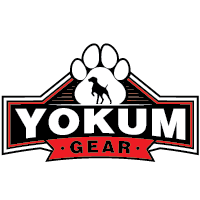Toilet training a new puppy is one of the first and most important challenges new dog owners face. Proper training not only helps in maintaining a clean home but also fosters a positive relationship between you and your furry friend. Here are some effective strategies to ensure successful toilet training for your puppy.
1. Establish a Routine
One of the most effective ways to toilet train your puppy is by establishing a consistent routine. Puppies thrive on routine, and setting regular times for feeding, playing, and bathroom breaks can make the process smoother. Take your puppy outside first thing in the morning, after meals, and before bedtime. Additionally, bring them to the designated toilet spot after naps and periods of play.
2. Choose a Designated Toilet Area
Select a specific area in your yard where you want your puppy to relieve themselves. Consistency is key, as this will help your puppy associate that spot with going to the bathroom. Always take your puppy to this same spot and use a consistent command, such as go potty, to reinforce this behavior.
3. Monitor Food and Water Intake
Keep track of your puppy’s eating and drinking habits to predict when they might need to go outside. Puppies generally need to relieve themselves 15-20 minutes after eating or drinking. By monitoring their intake, you can better anticipate their bathroom needs and reduce the likelihood of accidents.
4. Positive Reinforcement
Use positive reinforcement to encourage desirable behavior. Praise and reward your puppy immediately after they eliminate in the designated toilet area. Offer treats, verbal praise, or even a favorite toy as a reward. Consistent positive reinforcement helps your puppy associate going to the bathroom outside with positive outcomes.
5. Supervision and Confinement
Closely supervise your puppy, especially during the initial stages of toilet training. Confine them to a small, easily cleanable area when you cannot directly supervise them. Crate training can be particularly helpful, as dogs naturally avoid soiling their sleeping areas. Ensure the crate is appropriately sized—large enough for your puppy to stand, turn around, and lie down comfortably.
6. Learn the Signs
Observe your puppy's behavior to recognize signs they need to go outside. Common indicators include sniffing the ground, circling, whining, or heading toward the door. Being attentive to these signals allows you to take your puppy out promptly, preventing accidents inside the house.
7. Be Patient and Consistent
Toilet training requires patience and consistency. Accidents will happen, but it is essential to remain calm and avoid punishing your puppy. Harsh reactions can create fear and confusion, setting back progress. Instead, clean up accidents thoroughly to remove scents that might attract your puppy to the same spot again.
8. Gradually Extend Freedom
As your puppy becomes more reliable with their toilet habits, gradually give them more freedom in the house. Start by allowing access to one room at a time, and only expand their territory as they demonstrate consistent control. This gradual approach helps prevent accidents and reinforces learned behaviors.
9. Maintain a Clean Environment
Cleaning up accidents promptly and thoroughly is crucial. Use enzyme-based cleaners to eliminate odors, which can prevent your puppy from being drawn back to the same spot. Regularly sanitize the designated toilet area outside to ensure it remains a pleasant and inviting place for your puppy.
Conclusion
Effective toilet training requires time, patience, and a strategic approach. By establishing a routine, using positive reinforcement, and closely supervising your puppy, you can successfully train them to relieve themselves outside. Remember, consistency is key, and every puppy learns at their own pace. With dedication and love, your new furry friend will soon master their toilet habits, resulting in a happy and clean home for all.

